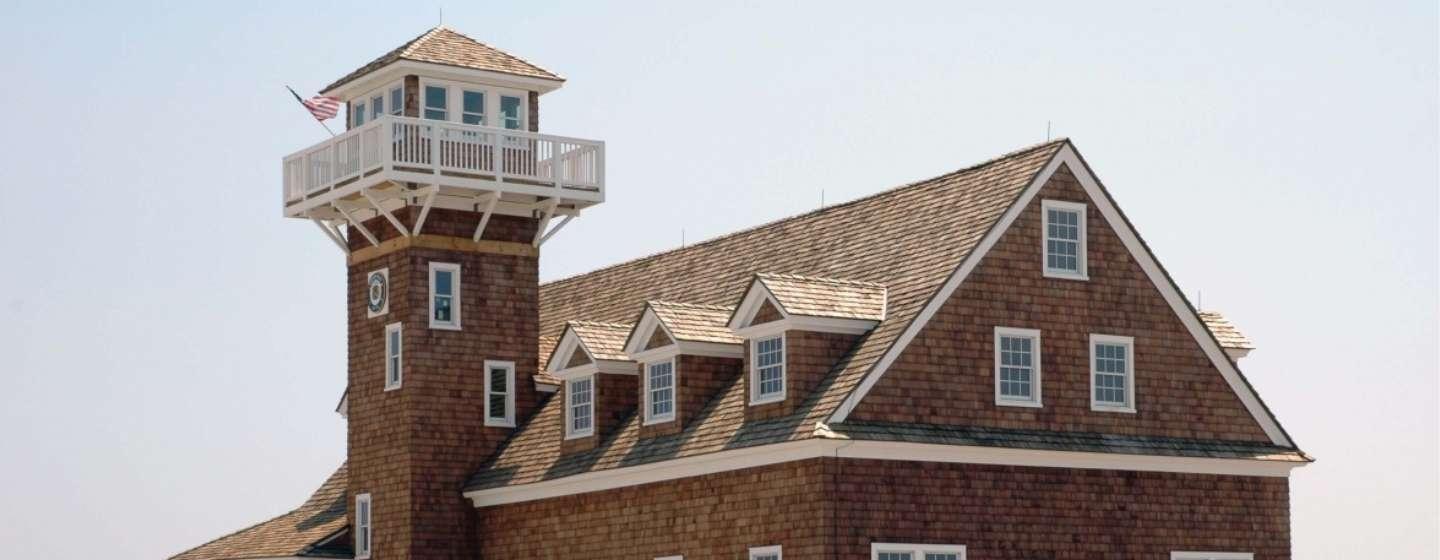An Outer Banks Landmark Needs a New Home


It’s iconic, picturesque and historic. And it needs to be moved. But to where?
We’re talking about the old Oregon Inlet Life-Saving Station.
Built in 1898 for about $7,000, the rescue station sits in a picture-perfect location surrounded by sand dunes. It’s situated on a stretch of beach between the Atlantic Ocean and the always turbulent and treacherous Oregon Inlet. The crews that once staffed the station rescued countless souls from shipwrecks along the coast.
The station also sits at the tip of Pea Island National Wildlife Refuge.
In 1988 the United States Coast Guard decommissioned the station, and it has been vacant ever since. Because of its exposed location, the station was almost buried in sand on several occasions. Vandals have struck multiple times as well.
The building was saved from being lost when the state paid almost $7 million to elevate, weatherize and renovate it in 2007–08. The state’s restoration of the structure has won awards. The purchase also included 10 acres of land around the station. As part of the project, the state also demolished several old dormitories nearby. Although the station’s historic good looks were restored, nothing was done to the interior. That work was saved for future plans.
With the building stabilized, the North Carolina Aquariums, which now manage the building, had planned to turn the station into a marine and coastal wildlife research center with labs for scientists and facilities for visitors. But then came Jennette’s Pier in nearby Nags Head.
Hurricane Isabel badly damaged Jennette’s Pier in 2003. The damage was so extensive that there was talk of tearing it down.
However, the NC Aquariums saw an opportunity to save it and build a research facility there. It took almost $25 million to restore the pier and build the facility, but Jennette’s Pier is now a major center for research and education as well as a big tourist attraction.
The Jennette’s Pier project was a big win for the region, but it put plans to develop the Oregon Inlet Life-Saving Station on hold.
“The focus and funds for the [Oregon Inlet] station all went into Jennette’s Pier, and the money spent was well worth it because the pier is a tremendous facility,” said Larry Warner, director of the North Carolina Aquarium on Roanoke Island. “But the station is a piece of history, and we want to see it preserved. We just don’t know how we will do it yet or where that will be.”
The NC Aquariums requested money in the past several governors’ proposed budgets to relocate the station to a site near the Roanoke Island Aquarium, but the funds weren’t approved.
“We have a lot of ideas of how we could utilize the building, but we’re not locked into the idea of moving the station near the aquarium,” adds Warner. “We’ve also talked with the Pea Island Preservation Society about moving the building to Manteo. We’re open to any suitable location if it makes sense and the funds can be found … moving the station, either by barge or by truck, and getting it suitable for some type of use is a million-dollar-plus endeavor.”
Warner says fortunately the station is still stable. However, the building was renovated 15 years ago, and the coastal weather has started to wear on the facility.
“It’s a piece of Outer Banks history that needs to be saved,” said Warner. “Just like when the station was operating, we need someone to throw a line to us.”
The Pea Island refuge—managed by the U.S. Fish and Wildlife Service, which operates the refuge around the station and has an easement for management of wildlife—has not requested that the building be moved.
So, for now, the life-station stands sentinel on the coast as it has for more than a century.